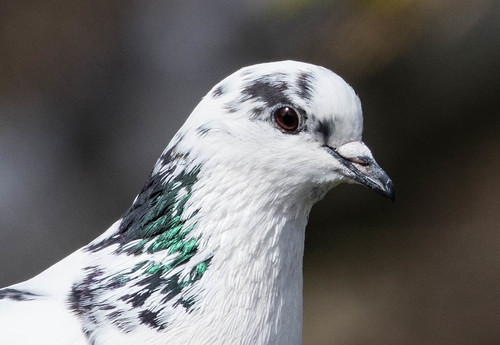Yesterday, I aired part of my conversation with Rosemary Mosco, author of the brand new, charming book, A Pocket Guide to Pigeon Watching: Getting to Know the World’s Most Misunderstood Bird, about why she likes pigeons so much, and why she thinks people should watch them. Today, on Day 2 of my own personally designated National Pigeon Awareness Week, Rosemary explains why pigeons are doves.
So, pigeons and doves belong to a scientific family called Columbidae that has just a whole bunch of different species that generally don’t interbreed a whole lot. We label them pigeons and doves sort of at random, not necessarily two separately related groups, which is why I say that pigeons are doves, absolutely, and if you venerate doves, you have to like your pigeons, too. Whereas breeds are basically varieties that we’ve developed, like bloodlines that we’ve developed in one particular species, so that they can interbreed and they all belong to the species Columba livia, which is the Rock Dove or Rock Pigeon. So it’s sort of like when you think about a dog—it comes in a chihuahua or a great dane, but a dog is technically part of the wolf species and is not the same as a fox or another dog species.
Rosemary made a few other equivalences in the book. I asked her to explain why she says pigeons are dinosaurs.
Yes! Yes! This is so great to me! So all birds technically are dinosaurs. They evolved from dinosaurs and they’re encompassed by this scientific group of dinosaurs. There were some tiny little dinosaurs but we always think of a T. Rex or something. It’s funny for me to think about that and then think about the fact that we’ve got these tiny little T. Rexes stomping around in our streets. The dinosaurs didn’t really go extinct. It’s just that most of them did, and the birds managed to hang on and then diversified into all these different creatures. I think doves and pigeons showed up around the Jurassic time, so they’ve been around for a while, but they’re definitely dinosaurs.
So they were probably flying over Tyrannosaurus rex who couldn’t do a thing about it with his teenie tiny arms.
And they’re cooing away and Tyrannosaurus rex is like “Stop!”
The other equivalence Rosemary makes is that “pigeons are puppies.”
Absolutely. The story about pigeon domestication is so much like the story of dog domestication. In both cases, the animal—the dog or the pigeon—was just sort of hanging around human settlements. And then there was this interrelationship that happened where we both benefited by getting kind of closer. In the case of pigeons, we benefited by eating them, we used their poop for fertilizer, and we also noticed the pretty ones and we started breeding fancy breeds.
That domestication happened a long time ago. We don’t really know where or when. We have kind of a rough idea—we think it was in the Fertile Crescent for pigeons, but there probably wasn’t one moment where a pigeon and a human locked eyes. I like to think it went that way but it’s definitely not how it happened. And then we’ve been living together and moving both dogs and pigeons around the world as people from that particular region have travelled. And then dogs went feral, but when we see a stray dog, we think, “there’s a dog,” but when we see a stray pigeon, we think, “Oh, that’s just a bird that lives in this particular area." In a lot of cases they really don’t. So I think it’s interesting. Pigeons have a lot to tell us about human history and the way we interact with animals for sure.
And speaking of human history, tomorrow Rosemary Mosco tells us how important pigeons are in the histories of many cultures throughout the world. Her new book, A Pocket Guide to Pigeon Watching: Getting to Know the World’s Most Misunderstood Bird, published by Workman, is available wherever books are sold. You can listen to this conversation on Laura's podcast here.


